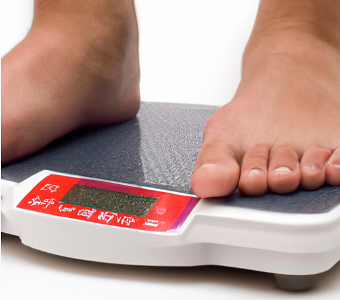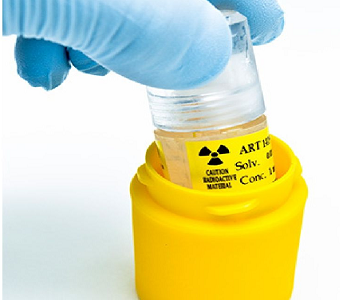When investing in development-stage biotech companies, evidence of success is everything. Therefore, investors should always start with the question: Is the company’s product candidate a great drug? The definition of “great drug” of course is a compound that serves an unmet or underserved need, has clear proof of safety and efficacy, and addresses a large verifiable market. Companies like Pharmacyclics (PCYC) and Medivation (MDVN) provide examples of biotech names that earned multi-billion dollar valuations for their lead compounds, prior to approval, based on strong clinical trial evidence, well-defined markets, and an ability of the drug to address more than one indication.
With regard to Keryx (KERX), analysts have recently raised their price targets on the stock as the company’s phosphate binder, Zerenex, continues to prove that it is an approvable drug preparing to penetrate large markets with a differentiated product profile. Importantly, a total of 18 Phase II and III clinical trials demonstrate Zerenex’s safety, efficacy, and differentiation from existing therapies, and as more study results are released, it becomes clearer that the FDA is likely to approve the therapy by June 7th of next year, the scheduled regulatory action (PDUFA) date. The consistency of clinical studies backing Zerenex is compelling, and given a high level of confidence in U.S. and international regulatory approvals next year, we attended the American Society of Nephrology’s (ASN) annual Kidney Week meeting last week to gauge physician enthusiasm for the therapy and the potential market opportunity. We came away convinced that Zerenex truly provides an improved solution for dialysis patients and fills an unmet clinical need in the larger pre-dialysis (CKD) patient setting where the drug is likely to become the only oral therapy of its kind to manage both phosphate and anemia parameters in patients with chronic renal failure.
In this article, we review what we learned by talking to nephrologists and providers of care for patients with chronic kidney disease (CKD). At the ASN meeting, the quality of the clinical data for Zerenex was appreciated by physicians, and importantly, doctors learning about the product seemed to have a high number of patients that are candidates for treatment. Most importantly, we learned that physicians at large CKD and dialysis treatment centers are quite passionate about delaying CKD patients (the majority of patients under care) as long as possible from progressing to dialysis. According to these doctors, properly managing serum phosphate and anemia (primarily hemoglobin levels) gives these patients the best chance possible. Doctors understand the role that the drug can play in naturally improving hemoglobin, while lowering phosphate without (or with reduced use of) IV iron and Epogen, which can keep patients healthier longer and potentially delay the transition to dialysis. Additionally, the convenience (and lower expense) of CKD patients not needing to drive to the clinic to get injections is quite favorable with Zerenex. We note that the recently released safety extension data for Zerenex solidifies that in the long-term, patients can be managed safely (no iron overload), with very favorable effects on hemoglobin and phosphate levels, and with significantly reduced use of IV iron and/or Epogen. The benefits of Zerenex are not just about cost savings, they’re also about improving patient care. This kind of a win-win situation for patients, doctors, and payors, plus the strong body of evidence supporting Zerenex’s clinical profile, make it a “great drug” in our opinion, and potentially, a vehicle for investors to make a significant return.
So once we know a company has a great drug, the next question is: Can we profit from it? We note that the price target average on KERX has been raised form $14 per share to about $19 in the last week, yet estimates for sales in the dialysis and CKD markets suggest annual peak sales for Zerenex in the $1.2-$1.4 billion range. Apply a 3-4x multiple to those sales, and one can see that shares have potential to quadruple from current levels. While it may take some time for analysts to fully credit sales and DCF models for Zerenex’s potential, the metrics on this stock suggest that investors can still get in front of the real upside that KERX has to offer. Several catalysts should keep the stock moving north, including the potential for a marketing partnership or an outright buyout of the company in the coming months. In this regard, we suspect KERX is disinterested in marketing Zerenex in Europe, so this territory is up for grabs and may be partnered soon.
Physician interest in Zerenex is growing; demand potential looks good. Key opinion leaders in the CKD treatment area already seem to be aware of Zerenex and its benefits, but many of the nephrologists we spoke with at the ASN meeting were just learning about the drug. Several physicians commented that they like the dual purpose nature of the product, with an ability to both control phosphate and help manage anemia with an oral tablet. This seems like a very differentiated aspect of Zerenex, and we believe it can significantly help the market penetration of this product. Physicians did comment that they hope the drug is “priced right” (meaning that reimbursement not an issue). We think this is a good sign that doctors learning about Zerenex are already thinking about patient access to the medicine.
A consistent topic of interest from physicians was the natural iron absorption that Zerenex offers vs. exogenous injections of IV iron directly into the bloodstream. IV iron injections can cause oxidative stress leading to cardiovascular issues, as well as allergic reactions that can be deadly. Additionally, IV iron use can lead to a greater rate of infection. According to the U.S. RDS Annual Data Report 2012, since 2010 when IV iron use began to rise substantially (the result of the dialysis “bundle”), the rate of infection in dialysis patients has increased by 43%. Importantly, interim results from the ongoing Zerenex long-term safety extension study, released on Friday, gained some visibility at the conference, and the absence of iron overload seen in the results was well received (ferritin plateaus over time with Zerenex). In fact, these data seemed to solidify the thinking with doctors that Zenerex takes advantage of a biologic feedback mechanism that naturally regulates iron absorption from the gut. The results also refute arguments by Keryx bears that there is risk of iron overload when Zerenex is used chronically.
Phase II CKD data also well-timed. The results for this trial were impressive, and PropThink reported on the data when they were released early last week. While this data set was not available for presentation at the ASN conference (to be presented at a later medical meeting), physicians are becoming aware that Zerenex may have potential to be used in both the dialysis and pre-dialysis CKD settings. The awareness was also driven by Phase III CKD results presented at the conference by the company’s Japanese partner, JT Torii. As Mr. King wrote in PropThink’s last article, the pre-dialysis CKD indication has billion-dollar potential, and should Zerenex receive FDA approval for use in dialysis in June (PDUFA date June 7th), doctors will likely start using the drug in pre-dialysis patients. Several doctors at the conference acknowledged that they will likely use Zerenex in pre-dialysis patients when approved, regardless of the formal indication. When we asked a nephrologist if Zerenex’s benefits were relevant to his CKD practice, he replied, “A majority of my patients are Stage III or IV and they would be prime candidates for Zerenex since no other phosphate binders are approved for CKD. The anemia benefits are also very important because I lose money on IV iron and due to Epogen’s label change, I cannot treat patients with this drug unless their Hemoglobin falls below 10 (preferred range is 11-12 g/dL for CKD patients). For many of my pre-dialysis patients, Zerenex looks like a good solution.”
We believe that the potential indication for Zerenex in CKD is not only important for the medical community, but also for KERX’s business outlook, as pharmaceutical companies not traditionally focused on the dialysis segment may be getting interested in the company. Drug companies that have diabetes franchises would likely be most interested in adding products to treat CKD, in our view. As a result, KERX is becoming a highly attractive asset in the pharmaceutical industry.
Saturday symposium; Zerenex gets the limelight. Keryx sponsored a symposium at the ASN meeting on Saturday titled “The Role of Iron in the Optimization of Anemia Management in CKD.” The feature of the event was a presentation by Dr. Julia Lewis (Vanderbilt University), the primary investigator for the Phase III Zerenex clinical study in dialysis patients. While the discussion primarily rebroadcasted prior results, we note that the presentation room was packed, as many conference attendees were seeking more information about this new phosphate binder. In addition, the Q&A was lively, and the moderator closed the session due to time constraints. We should also point out that posters on Zerenex’s clinical data at the conference also drew crowds throughout the day. The symposium was an ideal setting for visibility in the nephrology community, with many doctors seeing the data for the first or second time. Important points made by Dr. Lewis in her presentation were: 1) clinical trials have shown that common oral iron supplements are not sufficient for maintaining ferritin levels and do little or nothing to raise hemoglobin vs. placebo; and 2) in Keryx’s Phase III trials, 58% of Zerenex-treated patients required no IV iron during the last 9 months of the trial. These points are likely to go a long way with clinicians that are evaluating the use of Zerenex in their practice.
Economically sensitive market puts Zerenex in a good position. We spoke with dialysis providers at the ASN meeting, and major companies like DaVita (NYSE:DVA) continue to see Zerenex as a value driver in the dialysis treatment equation, particularly because of the potential cost savings of using less Epogen and IV iron. PropThink previously cited posters developed by DaVita that demonstrate the cost savings it expects by using Zerenex. This clearly demonstrates the interest in Zerenex from providers, a significant customer base for Keryx. Dialysis providers see a need for new phosphate binders given the side effects, safety issues, and pill burden of currently marketed products. Even though Fresenius is developing its own new phosphate binder, PA21, this product does not offer anemia management benefits like Zerenex, and doctors are more likely to use Zerenex for its differentiated properties. Nephrologists know that if the use of IV iron and Epogen in CKD and dialysis patients can be lowered or eliminated while maintaining appropriate hemoglobin levels, these patients have better outcomes than those that are heavy users of IV iron and Epo. In addition to cost, both Epogen and IV iron have safety and side effect issues, and Zerenex may help reduce those issues in patients. Safety data presented by Keryx at the ASN meeting showed significantly lower rates of infection, vascular, and cardiovascular adverse events. This poster was unavailable for distribution, but the data has been submitted to a peer-reviewed journal for future publication.
But when it comes to the dialysis segment, cost is king, particularly because the Medicare bundle (reimbursement per dialysis patient) has been shrinking and is expected to undergo additional cuts later this month. To demonstrate the economic sensitivity of physicians in the dialysis market, before 2008 under the “Buy and Bill” model, nephrologists were able to make ~$300 per patient visit when Epogen was able to be used without hemoglobin restrictions. Once the Epogen label was updated (for safety reasons) and reimbursement for patients with hemoglobin >10 g/dL went away, a movement of healthier patients to peritoneal dialysis (PD) rather than to hemodialysis (HD) took place because it was a more profitable move (healthier patients on PD won’t take up a dialysis chair). In fact, the trend of shifting more patients to PD continues (PD up by 42% over the last two years, according Hirth et al.), and doctors we spoke with believe that Zerenex will be preferred in these patients to help control phosphate and manage anemia at home.
Of course, dialysis centers are highly cost-conscious given the current “bundle” and the likely impact of lower profit margins driven by further cost cuts. As a result, the potential cost savings that Zerenex can offer by using less IV iron and Epogen should be a driver for the drug’s uptake, and we would not be surprised to see quick adoption of the product given the economic sensitivity of dialysis centers.
Upcoming catalysts for KERX. Zerenex is backed by clinical studies run by Keryx and its Japanese partner that solidly show the drug is a safe and effective phosphate binder that can significantly lower the use of IV iron and Epogen. The sheer number of studies and consistency of results is impressive and instills confidence that the drug will perform in the real world as advertised. A strong showing at the ASN meeting supports that the market for the product is real and that doctors are likely to use Zerenex for its differentiated properties in both the dialysis and pre-dialysis settings if the drug is approved next June. Just as important, large dialysis centers see the product fitting into treatment regimens. As for KERX shares, we believe there will be significant news flow over the next several months that will fuel upside for investors. Events to look out for include:
- Late 2013/Early 2014: Regulatory submission in Europe, potential EU marketing partnership.
- 1Q 2014: Approval of Zerenex in Japan; milestone payment from JT Torii (est. $10 million).
- 1Q 2014: End-of-Phase II meeting with FDA on CKD data; finalize Phase III trial design and primary endpoint (likely hemoglobin).
- 2Q 2014: Initial sales from Zerenex in Japan.
- June 7th 2014: FDA action (PDUFA) date for Zerenex.
- 3Q 2014: U.S. Launch of Zerenex
- 2014: Potential deal with pharmaceutical company.
In connection with KERX, PropThink has taken a long position.




